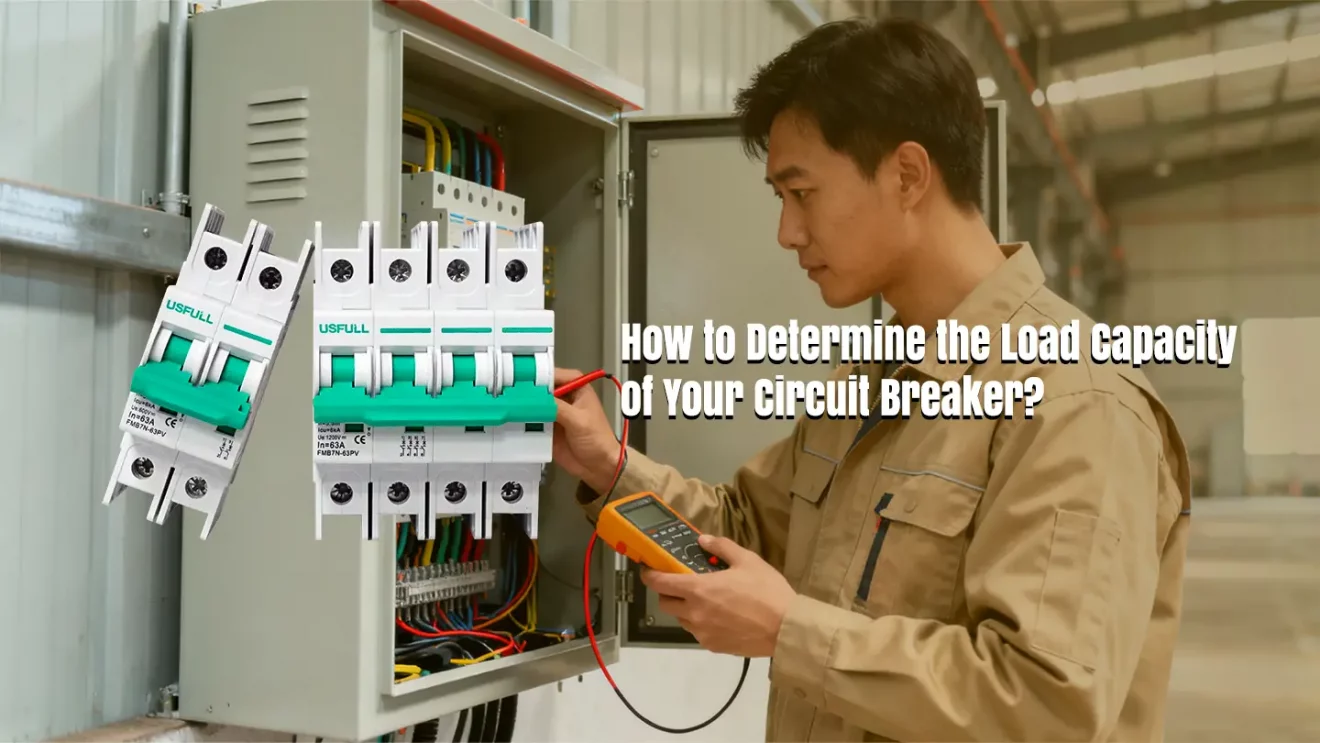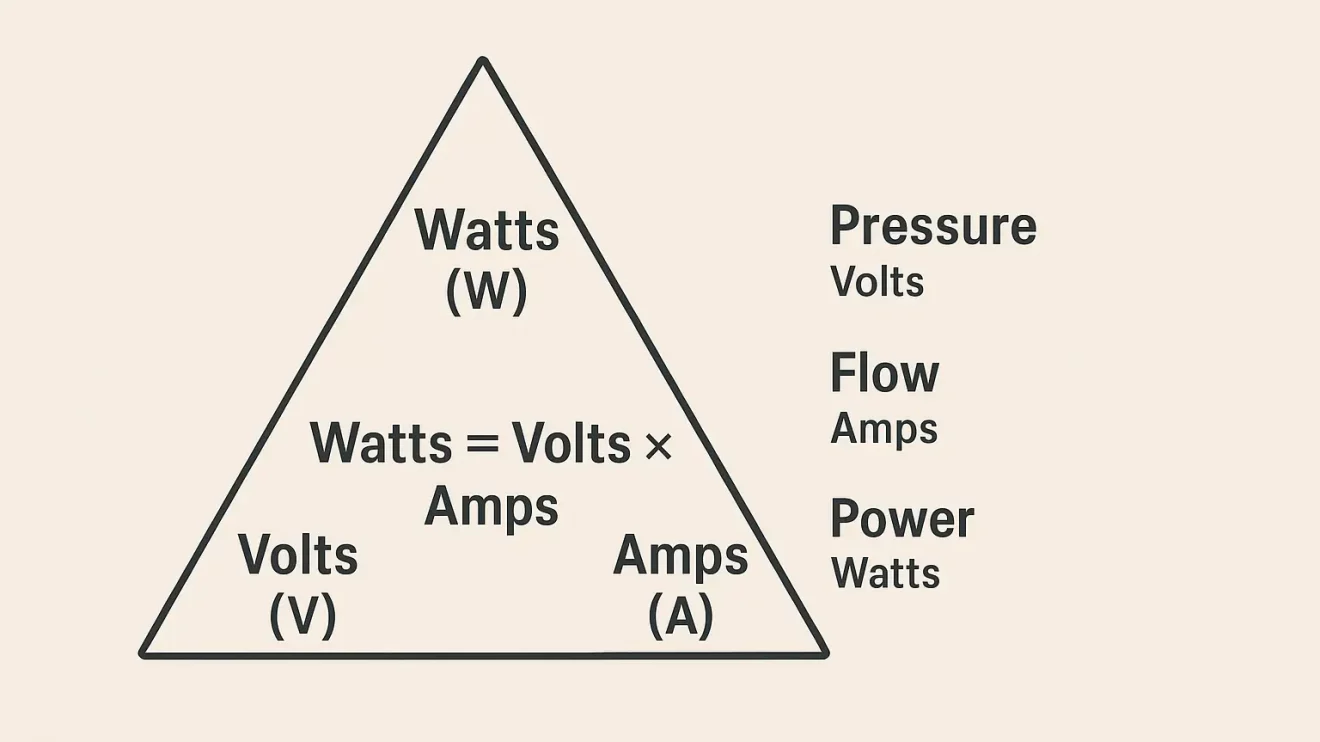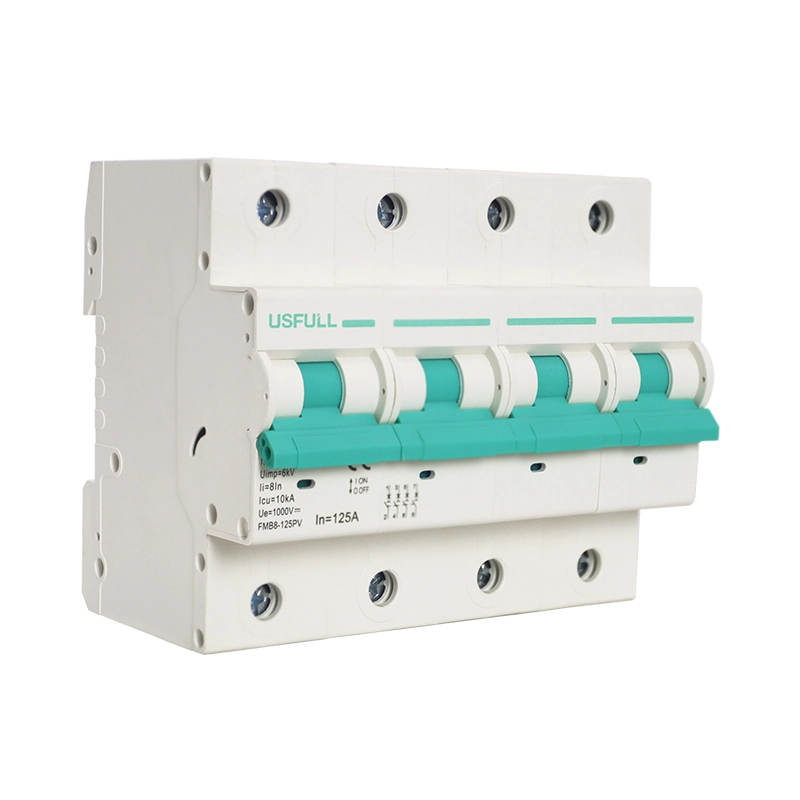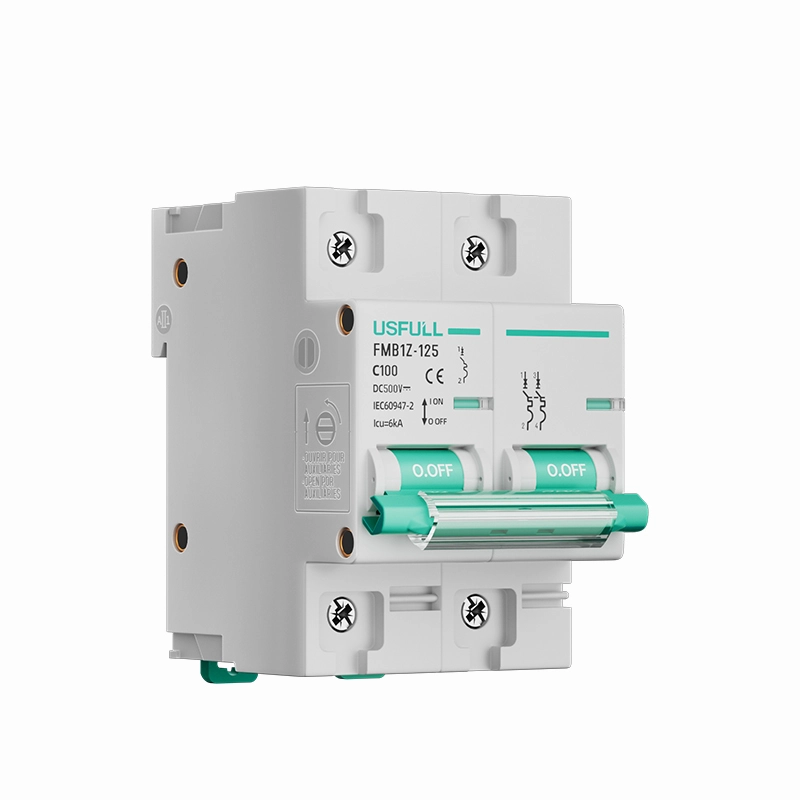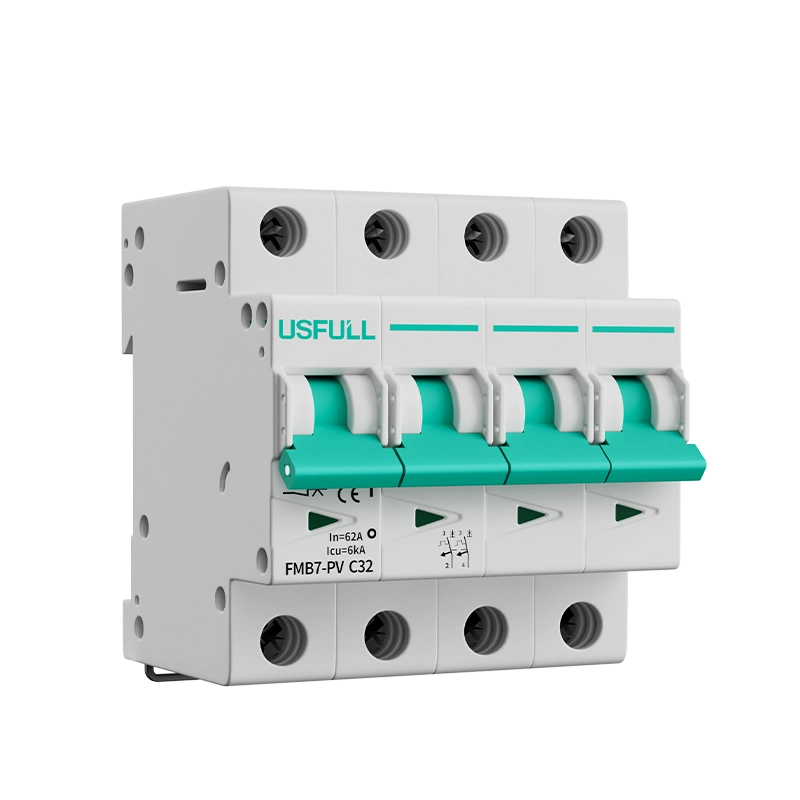Overloading your breaker can cause overheating, equipment failure, or even fires. Many users ignore load calculations until a trip occurs—by then, it’s too late. Learn how to measure breaker load safely.
Your circuit breaker’s load capacity determines how many electrical devices it can safely handle. This guide explains how to calculate circuit capacity, measure electrical loads, and troubleshoot common breaker issues to ensure safe operation in homes and industrial systems. Ideal for anyone working with AC or DC breakers and Solar DC Circuit Breakers.
Before you add new equipment or upgrade your panel, let’s understand how to determine your breaker’s true load limit and maintain system safety.
Understanding Circuit Breakers
A circuit breaker is a safety device designed to interrupt power when current exceeds safe limits. Acting as an automatic electrical switch, it protects appliances, wiring, and users from short circuits, overloads, and faults.
Every breaker has a rated current (amperage) that indicates how much current it can carry safely. In homes, you typically find 15A or 20A breakers, while industrial or solar systems may use 30A to 100A or more, including DC breakers for photovoltaic applications.
When a circuit draws more current than it can handle, the breaker “trips” to disconnect power. This prevents wires from overheating, reducing the risk of fire. A high-quality Circuit Breaker manufacturer in China will ensure precise trip characteristics, high breaking capacity, and compliance with IEC/UL standards.
For solar systems, a DC circuit breaker (also called breaker DC) is used instead of AC types because direct current behaves differently—it doesn’t pass through zero volts naturally, making arc extinguishing more difficult. That’s why Solar DC Circuit Breakers are specially designed to handle higher voltage DC arcs safely.
Understanding your breaker’s rated current and its 80% operational rule is the foundation for determining load capacity.
What Does WATT Mean?
Electricity is measured through three interconnected units: volts (V), amps (A), and watts (W). Each plays a key role in determining load capacity.
Volts measure electrical pressure—the force pushing current through the wires.
Amps measure current flow—the volume of electrons passing per second.
Watts measure total power consumption—the actual energy used by a device.
They relate through the equation:
Watts = Volts × Amps
For example, a 120V circuit powering a 600W heater draws:
600 ÷ 120 = 5 amps
To make it easier, imagine water flowing through a hose:
Voltage = water pressure
Amperage = amount of water flowing
Wattage = total power the water delivers
This relationship helps you determine how many devices can safely run on one breaker circuit. When you multiply the amperage by the voltage, you find the total wattage capacity that your breaker circuit can handle.
Knowing these relationships helps when working with Circuit Breaker suppliers to select the right breaker DC or AC type for your system.
Evaluating Your Electrical Load Capacity
Every circuit breaker has a maximum current rating, such as 15A, 20A, or 30A. However, the National Electrical Code (NEC) recommends using only 80% of the rated current for continuous loads—defined as electrical loads running for more than three hours.
That means:
A 15A breaker can safely handle 12 amps
A 20A breaker can safely handle 16 amps
Steps to Calculate Load Capacity:
Find the breaker rating: Check the amperage printed on your breaker’s handle or label.
Apply the 80% rule: Multiply the breaker’s rating by 0.8 to find its safe continuous load.
List all devices on that circuit and note their wattage ratings.
Calculate amperage draw: Use the formula Amps = Watts ÷ Volts.
Add up all amperage values. If the total exceeds 80% of the breaker’s capacity, redistribute or reduce the load.
Example:
For a 20A circuit on 120V:
Refrigerator = 500W ÷ 120V = 4.2A
Microwave = 1200W ÷ 120V = 10A
Lights = 240W ÷ 120V = 2A
Total = 16.2A ✅ Safe (within 80% limit)
For large systems, a Circuit Breaker manufacturer may provide load charts to simplify these calculations. In industrial applications or solar arrays, using DC circuit breakers from a reliable Circuit Breaker manufacturer in China ensures consistent performance and safety.
Determining Your Breaker’s Device Capacity
Understanding how many appliances your circuit can support prevents overloads and extends breaker life. The total current draw from all devices must remain below the breaker’s safe limit.
Step-by-Step Process:
Identify voltage: Most residential systems use 120V, while heavy machinery and solar systems often use 240V DC or 380V AC.
Check power ratings: Locate wattage information on each appliance (usually on the nameplate).
Use Amps = Watts ÷ Volts to determine individual current draw.
Add them all together.
Compare the total to the breaker’s safe amperage (80% of its rating).
For example, if you have a Solar DC Circuit Breaker rated for 63A DC at 1000V, the total connected DC load should not exceed 50A continuous current. Exceeding that limit increases arc risks and thermal stress on terminals.
Choosing the right breaker DC type from a trusted Circuit Breaker supplier ensures your electrical system operates efficiently and safely.
Troubleshooting and Inspecting Your Breaker Panel
Frequent breaker trips indicate overloads, faults, or component aging. Knowing how to inspect your panel helps prevent electrical hazards.
Common Causes of Breaker Trips:
Overloaded circuits: Too many devices drawing excessive current.
Short circuits: Live wire contacts neutral or ground.
Ground faults: Leakage current flows to earth.
Aging breakers: Worn-out mechanical parts or degraded insulation.
Inspection Tips:
Turn off main power before opening the panel.
Look for burn marks, rust, or melted insulation.
Tighten loose wires with an insulated screwdriver.
Replace breakers showing signs of heat damage.
If unsure, contact a certified electrician.
In DC systems, special attention must be given to DC breakers. Arcing during disconnection is more severe than AC, so always use Solar DC Circuit Breakers designed with arc extinguishing chambers. Working with a professional Circuit Breaker manufacturer in China guarantees compliance and longevity.
Additional Tip: Choosing the Right Breaker Type
Selecting between AC and DC circuit breakers depends on your system configuration:
AC Breakers: Used in home and industrial alternating current systems.
DC Breakers: Designed for solar panels, batteries, and EV chargers where current flows in one direction.
A reputable Circuit Breaker manufacturer can guide you on selecting appropriate ratings, pole numbers, and breaking capacities. If you’re working on a photovoltaic system, look for Solar DC Circuit Breakers rated for your maximum DC voltage and current.
Partnering with a quality Circuit Breaker supplier ensures that your breaker circuit components are durable, certified, and built for the specific environment—whether residential, industrial, or renewable energy systems.
| Feature | AC Breaker | DC Breaker |
| Current Type | Alternating Current (AC) | Direct Current (DC) |
| Application | Residential, Industrial | Solar Energy, Energy Storage, EV |
| Rated Voltage | 230V / 400V | 500V – 1000V |
| Arc Extinguishing Method | Natural Arc Extinguishing | Specialized Arc Chamber |
| Standard | IEC60898 | IEC60947-2 DC |

